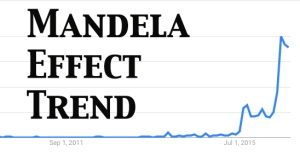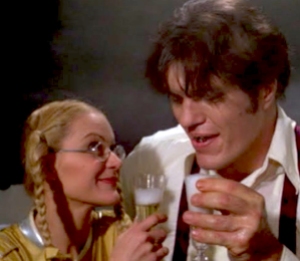By: Brandon West
What is the true nature of mind, and what is the real function of our brains?
The purpose of this article is to provide evidence that strongly indicates that you are not your brain, or your body for that matter, and that the nature of mind, of memory, and of our brains may actually be vastly different than we have been lead to believe.
Since time immemorial, man has been fascinated by the mind, leading great thinkers from Hippocrates to Descartes to ponder the nature of mind with wonder. Fast forward to modern times and observe how the mind is still revered and is dominating our culture. We have a lot of firm beliefs about the nature of mind, and I believe the ego – our limited perception of ourselves – and thus human ignorance, is intricately tied in with these beliefs.
But the truth of the matter is that we only understand a fraction of the minds potential, i.e. it’s capability of rote memorization and other analytically orientated functions, and we use even less.
We know hardly anything about the brain let alone the nature of mind. Is it possible that we are missing crucial aspects of its function and entire areas of development and potential that simply slide under the radar because they are not accepted by modern thought?
In this article we will explore the idea that the brain itself, with its tissue and neurons that we have until now deemed the source of our thoughts and identity, is actually just a tool, a receiver of human intelligence and consciousness, but not its source; and that the human mind is not sourced in the brain any more than the internet can be found in your laptop or your modem.
“My brain is only a receiver. In the Universe there is a core from which we obtain knowledge, strength and inspiration. I have not penetrated into the secrets of this core, but I know that it exists.” – Nikola Tesla
Projected Memory on the Screen of Consciousness
To begin I would like to delve into the work of a Canadian neurosurgeon named Wilder Penfield. Through his work with epileptic patients spanning from the 1930′s into the 1970′s he found that “stimulation of the human cerebral cortex with a gentle electrical current sometimes awakens specific memories, at other times dreams.” His work gave him insight into the function of the brain, memory, mind, and the interactions between them.
(This information on Wilder Penfield’s experiments is from his lectures The Mechanism of Memory, and Some Mechanisms of Consciousness Discovered During Electrical Stimulation of the Brain unless otherwise specified.)
During brain surgery once the brain was exposed, he found that by using an electrode that produced a “gentle” electrical current, he could stimulate areas of the brain and get specific, repeatable, intriguing and often times simply fascinating results. The patients were kept conscious throughout the procedure so that the doctors could carry out a conversation throughout the operation and receive immediate feedback on the nature of the experience these electrical currents would produce.
In one case an area he stimulated caused a man to not only hear a piano being played, but also to see the man sitting in front of him playing the piano. In another case a boy reported seeing men sitting on a chair and singing, and in yet another case the patient heard a complete orchestra. In each of these situations the individuals involved didn’t see fleeting shapes of people, or the wisp of a song, but they saw the image as vivid and clear as if they were actually there in the room.
One woman even heard a song, which turned out to not even have been one of her favorite songs, being played when an area of her brain was being stimulated. When stimulated at intervals without her knowledge (because the brain has no tactile sensation), the same song began playing again from the exact same spot.
The sound was so clear and flawless that she mistook a device in the operating room as a musical device that they were stopping and starting at intervals.
In all cases the patients recalled the events not like you would commonly recall a memory, which is usually as a fleeting mental image, but rather in such explicit detail that it was literally like they were reliving the event in question. Some patients literally saw people in front of them, and heard them just as clearly as if they were actually there.
As Dr. Penfield phrased it, it was like the mind was able to “project a memory or a dream upon the screen of consciousness.” Moreover he found that when he stimulated the brains of individuals and they remembered something, an image, or sound, or a feeling, those memories were always accompanied by the thought processes that accompanied them at the time. Therefore our brains record sensory data as a whole unit.
Holographic Memory and the Nature of Mind
In my article the unified field and the illusion of time, we explored some evidence supporting the understanding that all information is encoded directly into the field – the energy density of space/time – all around us (which unfortunately is beyond the scope of this article). But if we apply that understanding to the perception going on in this circumstance when Wilder Penfield stimulated the brains of his patients, what occurred was that his patients seemed to have perfect recall of past events and in visual cases, 3D or holographic memory.
This is not normal perception.
What if the stimulation of the brain itself caused his patients to project their memory onto the field? Or what if that information was already present in a holographic sense meaning that those images, and those songs and memories were encoded within the field, possibly recording directly into the field by the brain itself, and the stimulation by chance allowed them to perceive the memory directly in the field?
This not only suggests the possibility of holographic memory in human beings, but a very different understanding of memory itself (which we shall explore later).
The other thing that is interesting is that the events which were brought back were entirely mundane, meaning they were generally ordinary events of no significance. This suggests that our brains actually record every detail of our lives, even the mundane and ordinary, and that they are accessible to us if we could figure out how to access it, or in other words, how to tap into the full potential of our minds.
Wilder Penfield himself remarked that if the brain was indeed recording all of experience, then it is only natural that when dipping into this massive archive of information and memory that we happen upon ordinary events considering the vast quantity of information recorded in our lifetime (from How To Know God by Deepak Chopra).
In Deepak Chopra’s book How To Know God, he also cites how Wilder Penfield noted that the brain even retains memory while dormant, such as the fact that when patients are under deep anesthesia during surgery, about one percent of the population has a recollection of what the doctors were saying, and even some details of the procedure. It is interesting that…
“Under deep anesthesia, there are practically no higher brain waves at all, making it impossible for the cerebral cortex to accomplish anything so complex as remembering what a surgeon is saying.”(How to Know God, p. 217)
This is one of the reasons why Wilder Penfield concluded after nearly 40 years of research that the mind was an entity separate from the brain, and which did not rely on the brain to function.
Who Is The One Doing The Moving?
Deepak Chopra in his lecture series with Wayne Dyer entitled Living Beyond Miracles tells of another of Wilder Penfield’s experiments where he is stimulating the motor cortex of a patient’s brain which causes the patient to raise their arm in front of them. If we were to ask the man if it is him moving his are, he would reply that ‘No, I AM not.’
But when Penfield asked him to move his arm to the side the patient could move his arm, and he responded with something akin to ‘I AM moving my arm’, or ‘now I AM moving my arm’. Who is this I AM presence who is doing the moving? And why is it not activated when the body is moving on its own?
If our brain is the source of who we are, then any stimulation thereof which resulted in motion should give us the perception that it is us who is moving, but as Deepak Chopra states, because that is not the case this is indicative that our brain is not who we are, that the brain and body is only superficially related to who we are, and that the brain most certainly is not the source of who we are.
Brain Tissue Is Apparently Optional
Removing a hemisphere. Evidence for the holographic brain concept, and that our brain is only a recorder of experience and not the source of the mind can be found in a study done by Johns Hopkins University (J.H.U.) where they worked with brain-damaged children. They found that they could improve their level of intelligence and physical coordination by removing the damaged hemisphere of their brain. In essence, they literally cut out the damaged chunk of the children’s brain.
Within our current understanding of the brain this operation should significantly damage, if not irreparably hinder the child’s ability for memory and cognitive functions. From conventional understanding all of the functions which that hemisphere of the brain took care of would no longer be implemented leaving the child mentally deficient, or fragmented in some form.
If memories are stored in the brain, then after this operation those children should have lost those memories pertaining to the removed portion of their brain … if memories are stored in the brain. Yet the results were astonishing, and once again defied conventional thought.
Dr. Eileen P. G. Vining of J.H.U. studied 54 of the children who underwent the operation and she was simply astounded by the “retention of memory, and by the retention of the child’s personality and sense of humour.” A new version of the study was published in 2003 by John Hopkins University that dealt with 111 kids who had the operation between 1975 and 2003. Out of these 111 children 86% of them were seizure free or no longer needed medication (David Wilcock, The Source Field Investigations).
The mystery of hydrocephalus. For more evidence we move towards the work of Dr. John Lorber who is one of the world’s top experts on the condition known as hydrocephalus. Hydrocephalus is due to a problem with the flow cerebral spinal fluid which surrounds and cushions the brain, and when there is a blockage in this flow the pressure within the individual’s cranium is increased. Hydrocephalus means literally “water on the brain,” and brain swelling in this case leads to an oftentimes dramatic compression of brain tissue.
Dr. Lorber studied a total of 253 people with this condition. In the most severe cases, the pressure in the brain would increase to such a high level that the brain tissue would be compacted leaving the patient with only a fraction of their original amount of brain tissue. In Dr. Lorber’s study 9 people reached this severity with around only 5% of their total brain tissue left. That means only 5% of their neurons, brain cells, synapses, and so one were available in the patient’s brain.
Amazingly 4 out of 9 of those people with less than 5% of their brain tissue had an IQ over 100, and 2/9 had an IQ greater than 126. In other words 66.6% of them were fine. Given the drastic loss of brain tissue the obvious question is how is this possible? How can someone with almost literally no brain be intelligent at all, let alone above average?
Dr. Lorber was directed to a student at his university by his peers, literally based on the intriguingly large size of his head, they thought he may be of potential interest. This student had an IQ of 126 and had a “first-class honours degree in mathematics, and is socially completely normal.”
A brain scan was done on this individual with surprising results. It was found that out of the normal 4.5 cm of brain tissue, his condition had been compressed to only a few millimeters. In other words his head filled with cerebral spinal fluid, and only a few millimeters of brain tissue, yet he was still high functioning with above average intelligence (David Wilcock, The Source Field Investigations).
I have no technical understanding of how this is even possible except to simply suggest that possibly the conductivity and crystalline nature of water may be a contributing factor. Yet what this should clearly illustrate that we know very little of the true nature of mind, or the brain. Both of these once again demonstrate that the mind is independent of the brain.
The Nature of Mind-Brain Connection
This evidence raises some important questions:
What is the real function of our brains? Is it the brain tissue itself that creates our intelligence, or is it the electrical and conductive nature of the brain that allows us to connect to intelligence? More or less like a sophisticated antennae, just like Nikola Tesla observed of himself early in the 20th century.
All of this information so far creates a lot of friction with the current propagated understanding of the brain, if it doesn’t debunk it altogether. The information that Penfield discovered is suggesting that our brains are independent of our minds, and that all our memories are recorded in their entirety, and with the same detail that we experienced them. From where we do not yet know.
I also suggest that this is evidence that we have the potential for holographic memory. This hypothetically is a possible function of our minds where our memory is projected powerfully onto reality (onto the screen of the universal consciousness) so that we can experience and relive our memories in 3D. After all, this is what Wilder Penfield’s patients experienced.
As Johns Hopkins University, and John Lorber’s research found, it may not be that our brains are really that important. If children can have half their brains removed and retain their memories and personality, and if people can function with less than 5% of their brain tissue with above average intelligence, then what is the true purpose of the brain but as a vehicle for intelligence, not as the source of intelligence?
Like a highly sophisticated bio-technology that we use to experience this level of reality, create reality, and express ourselves. Like in the movie Avatar, maybe we are not actually our bodies but are just operating them.
Is our brain really where memories are stored? There is actually no evidence to support that even our memories are stored in the brain, and never has there been a memory discovered in the brain. This is because our brains are constantly changing and are not fixed structures.
The evidence is finally lining up with ancient spiritual truths from every culture which expressed explicitly that we are divine, and that our true nature is conscious awareness, and that we are merely a fragment of that divine consciousness expressed in physical form.
Conclusion
We may be vastly underestimating the power of our minds, and our true abilities to use them. If our minds can remember entire songs to perfection or orchestral performances that we only heard in passing then what is stopping us from accessing this on a conscious level?
It seems that every single detail of our lives is recorded with our brain, so the question I have is how do we access that information, and from where do we access it?
This evidence provides a truly exciting shift in the way we can view our minds, and more importantly our potential. If an electrode in our brain is able to stimulate such vivid recollection, is it not possibly that we can develop our imagination and our mental abilities to this point naturally so we can use that ability at will?
Is it not possible that there is much more going on during a simple thought process or recollection of an event than we give ourselves credit for? That is exactly what Wilder Penfield found which caused him at the end of his career to see the nature of mind as a field of energy or information which Deepak Chopra (I believe) termed the ‘mind-field’.
What if your essence is not in your brain, or in your body, but in a formless field of energy?
About the Author
Brandon West is the creator of Project Global Awakening. A website dedicated to the research of a variety of scientific and spiritual disciplines, and applying that knowledge to help you live an inspired life and change the world. Follow Project Global Awakening on Facebook, and Twitter.
from: http://themindunleashed.org/2015/01/nature-mind-holographic-brain.html





 Dr. Robert A. Burton recounts a fascinating experience in his book, On Being Certain, of attending a medical school reunion dinner in which conversation turned to where people were when they heard the news that Kennedy was assassinated. Burton and his classmates had all been in their second year of medical school, attending similar classes and hanging out together. An argument broke out amongst the reunion attendees as a urologist thought they were all at lunch, an internist remembered they’d been in the lab, and a pathologist remembered being at a pub down the street from the med center. With classmates turning to Burton to be the tie-breaker, setting history straight, the pathologist and urologist both agreed on one thing as they announced in unison, “Everyone remembers the Kennedy assassination.”
Dr. Robert A. Burton recounts a fascinating experience in his book, On Being Certain, of attending a medical school reunion dinner in which conversation turned to where people were when they heard the news that Kennedy was assassinated. Burton and his classmates had all been in their second year of medical school, attending similar classes and hanging out together. An argument broke out amongst the reunion attendees as a urologist thought they were all at lunch, an internist remembered they’d been in the lab, and a pathologist remembered being at a pub down the street from the med center. With classmates turning to Burton to be the tie-breaker, setting history straight, the pathologist and urologist both agreed on one thing as they announced in unison, “Everyone remembers the Kennedy assassination.” Ulric Neisser and Nicole Harsch conducted studies of Emory University students’ accuracy of recollections of events at the time of the Challenger space shuttle explosion, starting by collecting first-hand accounts from 106 students the day after the disaster detailing how they’d heard of the explosion, what they’d been doing at the time, where they were, and how they felt. The researchers followed up with the same students two and a half years later, and were startled to find that students achieved a mean score of 2.95 compared to a perfect score of 7. Less than 10% of the students were able to exactly match their original recollection of events, and over half of the students got a score less than 2.
Ulric Neisser and Nicole Harsch conducted studies of Emory University students’ accuracy of recollections of events at the time of the Challenger space shuttle explosion, starting by collecting first-hand accounts from 106 students the day after the disaster detailing how they’d heard of the explosion, what they’d been doing at the time, where they were, and how they felt. The researchers followed up with the same students two and a half years later, and were startled to find that students achieved a mean score of 2.95 compared to a perfect score of 7. Less than 10% of the students were able to exactly match their original recollection of events, and over half of the students got a score less than 2.
 Berenstein Bears VS Berenstain Bears
Berenstein Bears VS Berenstain Bears


 A new study reported in the prestigious journal Cell (June 18, 2015) has found evidence that neurons break their own DNA to enable us to learn and to form memories. Up till know it has widely been assumed that a breakage in the DNA means damage and if the breakage remains then the DNA’s own repair systems are defective.
A new study reported in the prestigious journal Cell (June 18, 2015) has found evidence that neurons break their own DNA to enable us to learn and to form memories. Up till know it has widely been assumed that a breakage in the DNA means damage and if the breakage remains then the DNA’s own repair systems are defective. The answer is a resounding no – brains are more sophisticated than that.
The answer is a resounding no – brains are more sophisticated than that. 








 Credit: Dreamstime
Credit: Dreamstime